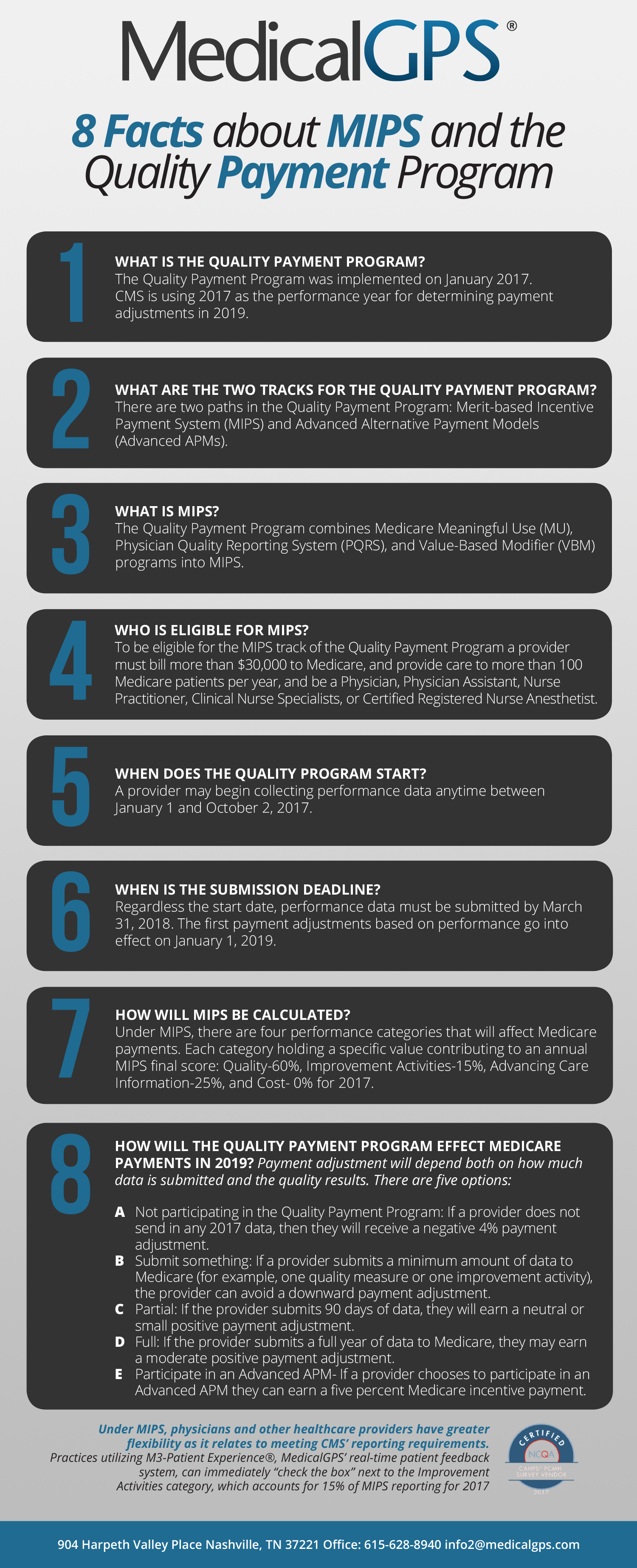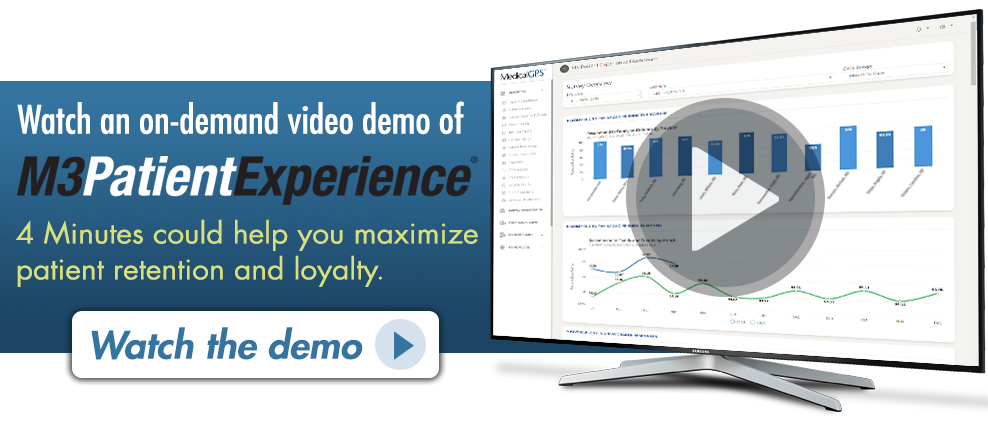Under MIPS, physicians and other healthcare providers have greater flexibility as it relates to meeting CMS’ reporting requirements.

Download a copy of the MIPS Fact Sheet
8 Facts about MIPS and the Quality Payment Program
- What is the Quality Payment Program? The Quality Payment Program was implemented on January 2017. CMS is using 2017 as the performance year for determining payment adjustments in 2019.
- What are the two tracks for the Quality Payment Program? There are two paths in the Quality Payment Program: Merit-based Incentive Payment System (MIPS) and Advanced Alternative Payment Models (Advanced APMs)
- What is MIPS? The Quality Payment Program combines Medicare Meaningful Use (MU), Physician Quality Reporting System (PQRS), and Value-Based Modifier (VBM) programs into MIPS.
- Who is eligible for MIPS? To be eligible for the MIPS track of the Quality Payment Program a provider must bill more than $30,000 to Medicare, and provide care to more than 100 Medicare patients per year, and be a Physician, Physician Assistant, Nurse Practitioner, Clinical Nurse Specialists, or Certified Registered Nurse Anesthetist
- When does the Quality Program Start? A provider may begin collecting performance data anytime between January 1 and October 2, 2017.
- When is the Submission Deadline? Regardless the start date, performance data must be submitted by March 31, 2018. The first payment adjustments based on performance go into effect on January 1, 2019.
- How will MIPS be calculated? Under MIPS, there are four performance categories that will affect Medicare payments. Each category holding a specific value contributing to an annual MIPS final score: Quality-60%, Improvement Activities-15%, Advancing Care Information-25%, and Cost- 0% for 2017.
- How will the Quality Payment Program effect Medicare payments in 2019? Payment adjustment will depend both on how much data is submitted and the quality results. There are five options:
- Not participating in the Quality Payment Program: If a provider does not send in any 2017 data, then they will receive a negative 4% payment adjustment.
- Submit something: If a provider submits a minimum amount of data to Medicare (for example, one quality measure or one improvement activity), the provider can avoid a downward payment adjustment.
- Partial: If the provider submits 90 days of data, they will earn a neutral or small positive payment adjustment.
- Full: If the provider submits a full year of data to Medicare, they may earn a moderate positive payment adjustment.
- Participate in an Advanced APM- If a provider chooses to participate in an Advanced APM they can earn a five percent Medicare incentive payment.
Practices utilizing M3-Patient Experience®, MedicalGPS’ real-time patient feedback system, can immediately “check the box” next to the Improvement Activities category, which accounts for 15% of MIPS reporting for 2017.


